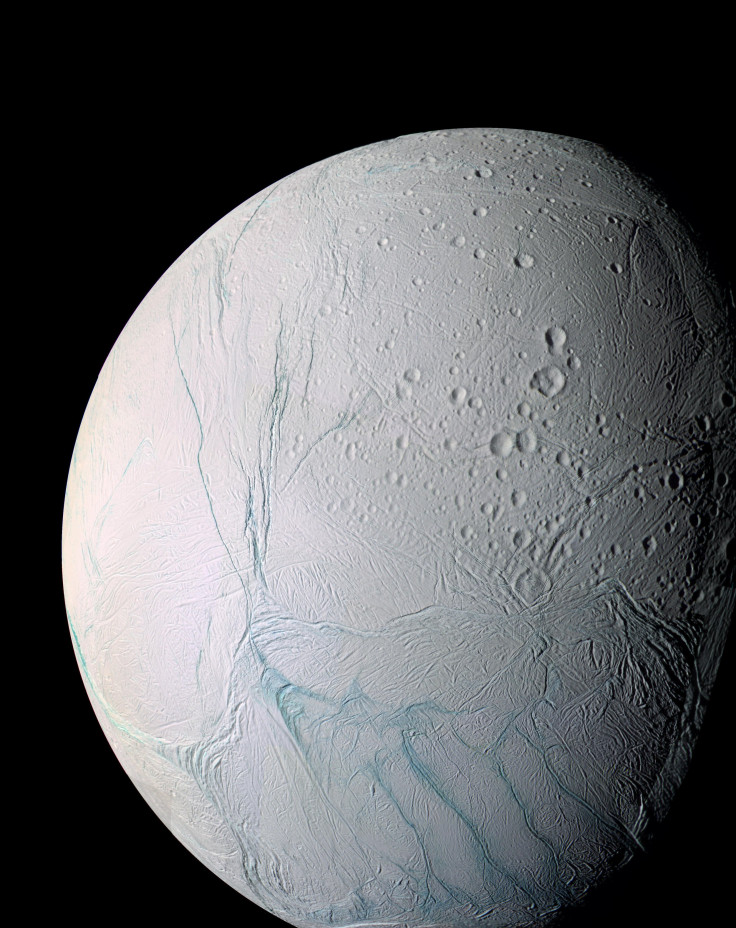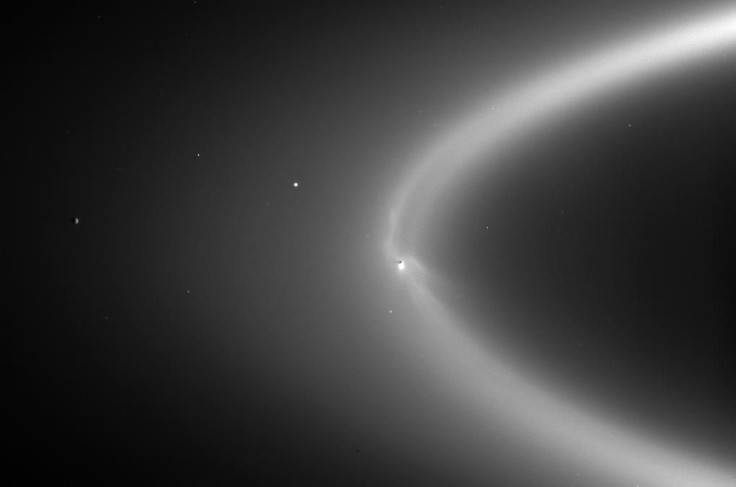Is There Life On Saturn's Moon? What We Just Learned About Enceladus

Things just got a little more complicated for the scientists searching our outer solar system for alien life, after the discovery that an organic molecule was probably created by a process in outer space rather than an extraterrestrial creature on one of Saturn’s moons.
The icy world Enceladus has been a point of excitement for astronomers since NASA’s Cassini space probe sent back data suggesting it has a heat source and a liquid ocean below its surface, both of which would be necessary to sustain life as we understand it. Cassini has flown through a plume spurting off Enceladus — probably created as material from its underground ocean spills through cracks in its surface ice — into space and detected hydrogen, water, carbon dioxide, methane and other molecules. There was also a similar amount of methanol as can be found in Earth’s oceans.
Read: Cassini Images That Illuminate Saturn and Its Moons
But new observations that detected the organic molecule methanol around that moon probably are not the byproduct of a living creature there, according to the Royal Astronomical Society. Rather the methanol “suggests that material spewed from Enceladus undertakes a complex chemical journey once vented into space.”
The research was presented at the Royal Astronomical Society’s National Astronomy Meeting 2017, running through July 6 in Hull, England. It represented the first time a telescope on the ground, rather than equipment in space, detected a molecule from Enceladus, the RAS said, and the scientists found a lot of it too.
The telescope was the Institute for Radio Astronomy in the Millimeter Range’s 30-meter radio telescope in Spain’s Sierra Nevada Mountains.

Between when the plumes shoot into space and that material feeds into Saturn’s E-ring, there are processes going on that remain to be investigated and understood.
“Recent discoveries that icy moons in our outer solar system could host oceans of liquid water and ingredients for life have sparked exciting possibilities for their habitability,” Cardiff University’s Emily Drabek-Maunder said in the society’s statement. “But in this case, our findings suggest that that methanol is being created by further chemical reactions once the plume is ejected into space, making it unlikely it is an indication for life on Enceladus.”
The methanol potentially could be appearing in such large quantities in the space around Enceladus, higher than the content of the plumes themselves, because a cloud of gas that the moon expelled was trapped by the magnetic field of Saturn or because has of the planet’s E-ring has spread out, according to the RAS.
Read: The Signs of Alien Life on Other Planets
“This study suggests a degree of caution needs to be taken when reporting on the presence of molecules that could be interpreted as evidence for life,” researcher Dave Clements, from Imperial College, said in the statement.
NASA is preparing to dig deeper into icy worlds like Enceladus to search for solid clues of aliens on the moon. The space agency has worked on a fleet of robots that could melt or drill through ice and collect samples. Those robot prototypes also have wheels that can grip the ice to safely traverse it and are built to withstand the frigid temperatures and extreme radiation they would encounter on such a place.
Hari Nayar, who led the robotics research for NASA, said earlier this year, “One of the most exciting places we can go is deep into subsurface oceans — but doing so requires new technologies that don’t exist yet.”
© Copyright IBTimes 2025. All rights reserved.



















